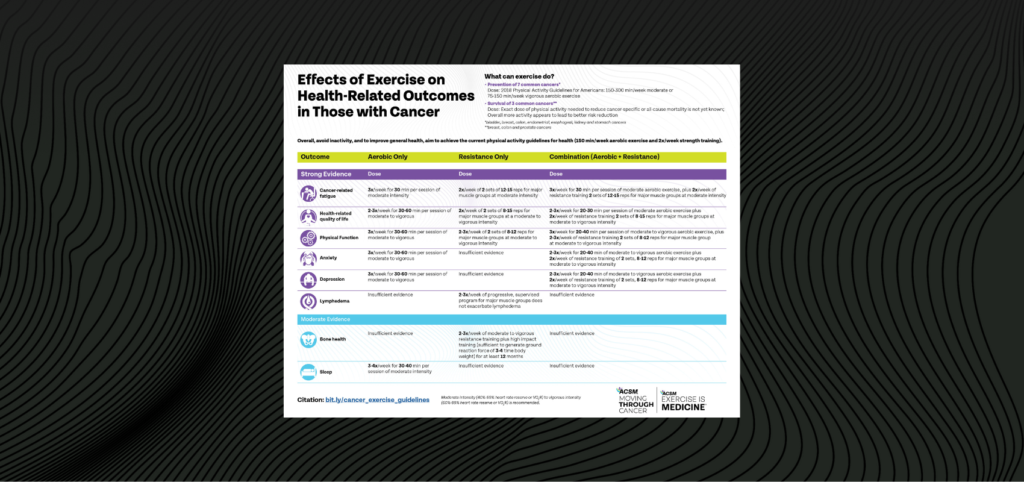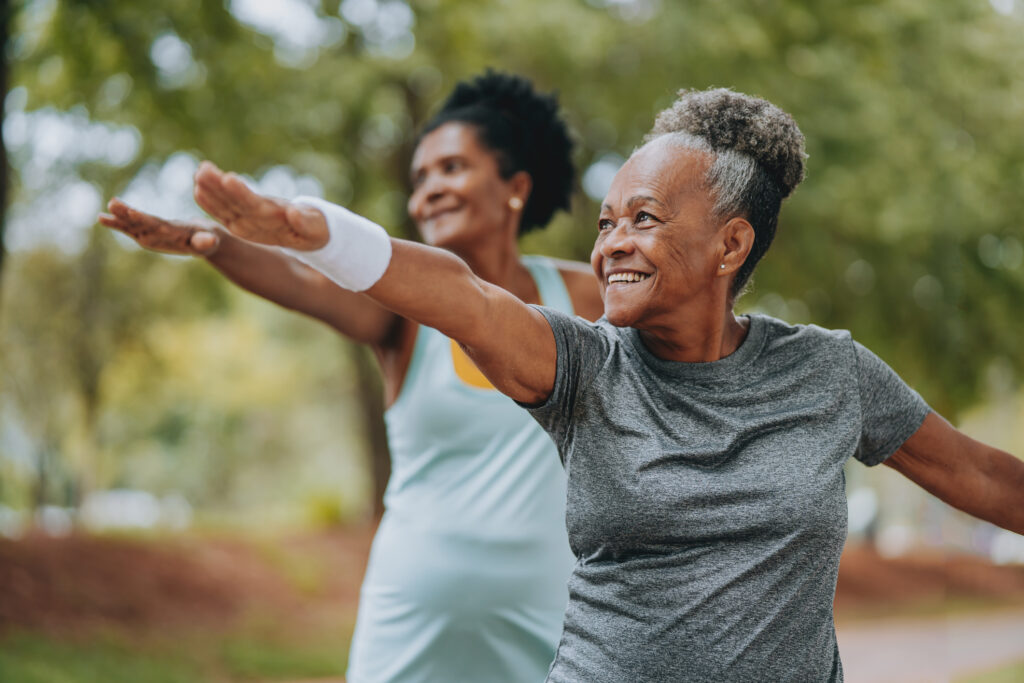Sit Less, Move More, and Exercise: The Reasons Why

You can’t out-run a sedentary lifestyle. New research shows that light-intensity physical activity is an important part of your routine for health.
Physical Activity in School-Aged Children

School-aged children should get at least 60 minutes of moderate- or vigorous-intensity physical activity every day of the week. Only 26% of adolescents met these physical activity guidelines in 2018, and that percentage has remained stable since 2011. The COVID-19 pandemic made it even more difficult for children to meet these guidelines. Despite knowing the risk of sedentary behavior […]
Physical Activity Guidelines for Cancer

This chart outlines the effects of exercise on health-related outcomes in those with cancer. The guide features evidence-based physical activity recommendations and the associated benefits for specific symptoms and side effects of cancer and its treatments.
Five Frequently Asked Questions About the Physical Activity Guidelines

The US Department of Health and Human Services (DHHS) released the second edition of the Physical Activity Guidelines for Americans on November 12, 2018. The guidelines are meant to to help Americans understand the types and amounts of physical activity that offer important health benefits. #1 How many Americans meet the Physical Activity Guidelines? In 2017, only […]
